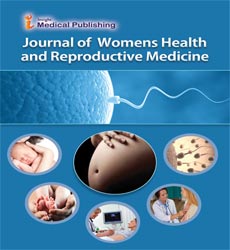Report of Frequencies of Y Chromosome Microdeletions
Dancet Mech*
Department of Reproductive Medicine Centre, Leuven University Fertility Clinic, Leuven, Belgium
- *Corresponding Author:
- Dancet Mech
Department of Reproductive Medicine Centre,
Leuven University Fertility Clinic, Leuven,
Belgium,
E-mail: Dancet@gmail.com
Received date: November 16, 2023, Manuscript No. IPWHRM-23-18393; Editor assigned date: November 20, 2023, PreQC No. IPWHRM-23-18393 (PQ); Reviewed date: December 04, 2023, QC No. IPWHRM-23-18393; Revised date: December 11, 2023, Manuscript No. IPWHRM-23-18393 (R); Published date: December 18, 2023, DOI: 10.36648/ipwhrm.7.3.74
Citation: Mech D (2023) Report of Frequencies of Y Chromosome Microdeletions. J Women’s Health Reprod Med Vol.7 No.3:74.
Introduction
Barrenness is an illness described by the inability to lay out a clinical pregnancy following a year of normal, unprotected sex or because of a weakness of an individual's ability to repeat either as an individual or with his/her accomplice. Male fruitlessness is a worldwide medical problem that influences 7% of the male populace where the reason stays unexplained. On a worldwide scale, the reasons for male barrenness are boundless and ineffectively figured out by and large. Albeit different symptomatic tests are accessible, their translation is loose and frequently emotional. Notwithstanding that, around 20% of barren guys have dubious fruitlessness, incorporates two classes: idiopathic male fruitlessness that are fruitless guys with strange semen investigations with an obscure reason for that irregularity, and unexplained male barrenness guys, with "typical" semen examination who can't impregnate because of obscure causes. Furthermore, hereditary variables are additionally answerable for male fruitlessness and are regularly because of chromosomal anomalies, for example, Klinefelter disorder 47XXY, inborn shortfall of vas deferens, microdeletions, and cystic fibrosis. Since the Yq locus contains countless qualities that are translated at the testicular level, the Y chromosome assumes an imperative part during sexual separation a spermatogenesis in male turn of events. Accordingly, as happens in the Azoospermia Factor (AZF) c locale, because of the presence of numerous amplicons.
Recurrence of Microdeletions
Microdeletions of the Y chromosome are generally viewed as the subsequent driving reason for male fruitlessness. It is assessed that the recurrence of microdeletions in fruitless me n is around 7%. Notwithstanding, concentrates on show that there is fluctuation of microdeletion frequencies by ethnic boundaries all through the world. Y chromosome Microdeletions are all the more habitually present in the AZFc district (60%), less continuous in the AZFb locale (16%), and seldom present in the AZFa district (5%). There are Y chromosome microdeletions that include a few AZF factors at the same time and are analyzed in 14% of cases. As of late, helped proliferation habitats permit couples, with a past conclusion of male barrenness connected to chromosomal distortions, to multiply utilizing the helped conceptive method: Intracytoplasmic sperm infusion. Consequently, it is essential to perform genomic evaluating in male patients for the recognition of hereditary etiologies connected to male fruitlessness. The point of this study is to decide the frequencies and qualities of the microdeletions of the Y chromosome in the AZFa, AZFb and AZFc sub regions using the Polymerase Chain Reaction (PCR) in patients who went to a Peruvian community for discussion of helped reproduction. This was an imminent exploratory review completed at Niu Vida helped proliferation place. We got the center's morals board of trustees endorsement for this review. 200 and one patients from the helped proliferation program were enrolled for the review during the years 2019 and 2020. These patients were educated and they consented to sign their assent for the utilization of the relating tests.
Chromosome Microdeletions
Each fundamental example was gotten in a sterile compartment properly named; tests were saved for 20-30 min for liquefaction to happen. The perceptible examination was done and the accompanying boundaries were assessed: Volume, variety, pH, appearance, consistency and liquefaction. To further develop the example assortment experience for patients a painless technique was picked: An oral swab and an aliquot of 500 μL of original example. This study doesn't assess blood tests to keep up with painless techniques. The pervasiveness of Y chromosome microdeletions in the AZF district was 6.45% in oligozoospermic and azoospermic patients, and a predominance of 20% was noticed explicitly in azoospermic patients. No microdeletions of AZFb type were identified. A halfway district microdeletion of AZFa was distinguished in a teratozoospermic patient with a typical sperm count.
Open Access Journals
- Aquaculture & Veterinary Science
- Chemistry & Chemical Sciences
- Clinical Sciences
- Engineering
- General Science
- Genetics & Molecular Biology
- Health Care & Nursing
- Immunology & Microbiology
- Materials Science
- Mathematics & Physics
- Medical Sciences
- Neurology & Psychiatry
- Oncology & Cancer Science
- Pharmaceutical Sciences
